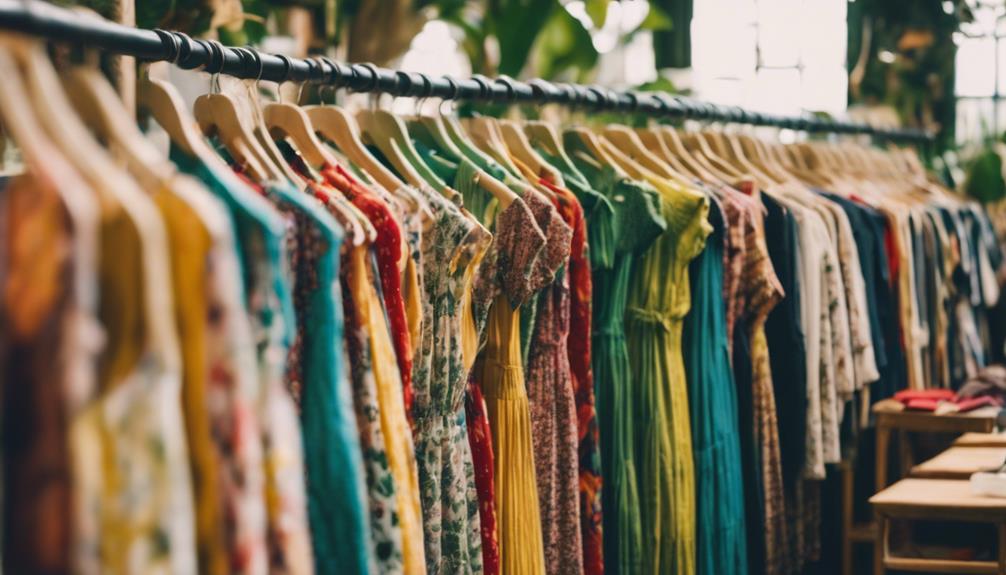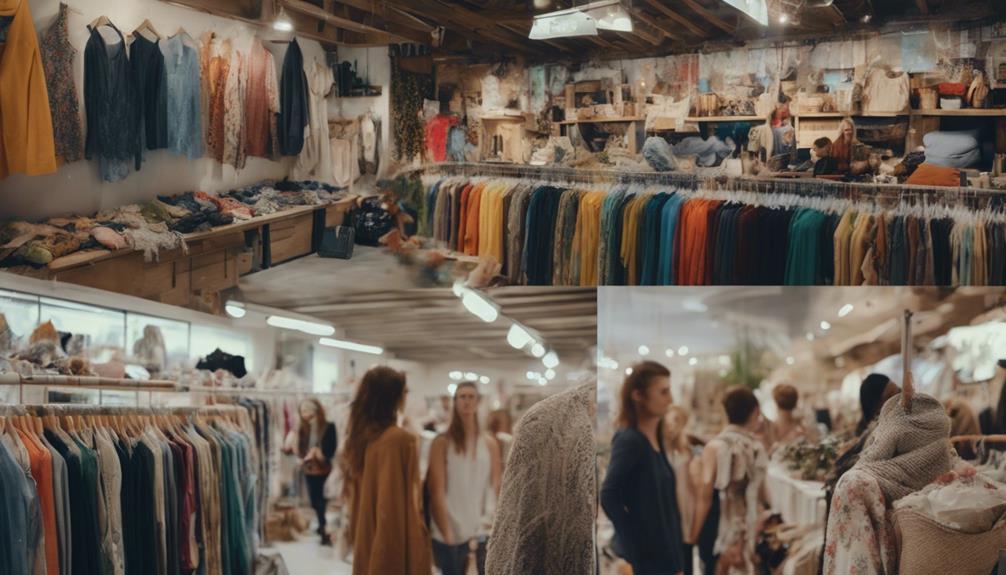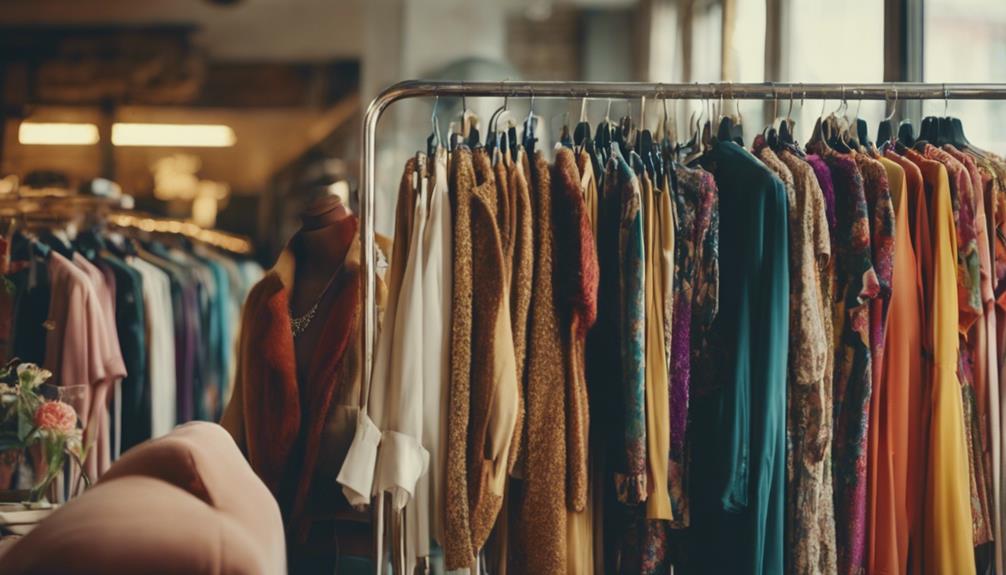Yes, sustainable fashion can definitely be affordable, and it’s more accessible than you may think. Many cost-effective options are available, such as thrift shopping and clothing rentals, which allow you to discover unique pieces without spending a lot. Although sustainable brands may appear more expensive initially, they often result in long-term savings by prioritizing durability. Additionally, supporting local designers usually provides eco-friendly options at reasonable prices. With some creativity, you can adopt ethical fashion without going over budget. There is a lot more to learn about how to incorporate sustainable choices within your budget.
Key Takeaways
- Sustainable fashion can be affordable through options like thrift shopping, which offers unique garments at lower prices and reduces waste.
- Renting clothes allows access to trendy pieces without the financial burden of ownership, promoting a circular fashion economy.
- Upcycling and DIY techniques provide creative ways to transform old garments into new styles while minimizing waste.
- Supporting local designers often leads to eco-friendly options that are affordable, as they typically use sustainable materials.
Myths of Fast Fashion
Many people mistakenly believe that fast fashion is a necessity because it's trendy and affordable, overlooking its hidden social and environmental costs. One common myth is that sustainable fashion is only for the privileged, but this isn't true. You can find ethical clothing options that are budget-friendly, especially when you consider the long-term savings of higher quality, durable pieces.
Another misconception is that fast fashion doesn't have a significant environmental impact. In reality, the production process often involves harmful chemicals and massive waste, which contributes to pollution and climate change. By shifting your mindset, you can recognize that choosing ethical labor practices in the fashion industry not only supports fair wages but also reduces exploitation.
Many brands are working hard to make sustainable fashion more accessible and affordable, but marketing often portrays these options as confusing or overly expensive. It's crucial to see through the myths of fast fashion and understand the true costs behind those low price tags.
When you choose to invest in ethical clothing, you're making a conscious decision that benefits both people and the planet. You have the power to challenge the fast fashion cycle and promote a more sustainable future.
Embracing Sustainable Choices

When you embrace sustainable choices, you'll find plenty of budget-friendly options that don't compromise on style.
Thrift stores and local designers offer unique pieces that support responsible consumption and your community.
Budget-Friendly Options Available
Embracing sustainable choices doesn't have to break the bank, as budget-friendly options like thrift shopping and clothing rentals make eco-conscious fashion accessible to everyone.
Thrift stores and secondhand platforms offer affordable sustainable fashion that allows you to snag unique garments at a fraction of retail prices. By choosing these options, you not only save money but also contribute to sustainable practices that reduce clothing waste.
If you're looking for trendy pieces without the high costs, consider renting clothes for special occasions. This approach promotes a circular fashion economy and gives you access to stylish items without the commitment of ownership.
Additionally, you can release your creativity through DIY and upcycling techniques. Transforming old garments into new styles minimizes waste and keeps your wardrobe fresh without needing new purchases.
Supporting local designers can also lead you to unique and affordable options that reflect sustainable practices.
When you explore these budget-friendly options, you'll discover that sustainable fashion isn't only attainable but also enjoyable, proving that being eco-conscious doesn't mean compromising your style or wallet.
Value of Responsible Choices
Making responsible choices in fashion not only benefits the planet but also aligns with your values and budget. Embracing sustainable fashion doesn't have to break the bank; in fact, affordable fashion can often be found in unexpected places.
Thrift shopping for second-hand clothes allows you to snag unique pieces at low prices while reducing clothing waste. Additionally, renting clothes gives you access to trendy items without a significant financial commitment, promoting a circular fashion economy.
You can also express your creativity through upcycling, transforming old garments into fresh styles, making each piece uniquely yours. Supporting local designers not only enhances your wardrobe with ethical fashion but also strengthens local economies.
By choosing these options, you're making responsible choices that reflect awareness of the true costs of clothing, including their environmental and social impacts.
Ultimately, sustainable fashion is about more than just aesthetics; it's a commitment to a lifestyle that values ethics and sustainability. By embracing these principles, you can create a wardrobe that feels good, looks good, and aligns with your values—all while staying within your budget.
Understanding True Costs

When you think about the true costs of fashion, consider the hidden environmental impacts and the ethical labor expenses that often go unnoticed.
While sustainable options might seem pricier upfront, they can lead to long-term savings by reducing waste and supporting fair practices.
Hidden Environmental Costs
Many consumers overlook the hidden environmental costs of fast fashion, which extend far beyond the low prices they see on tags.
While affordable and accessible clothing seems appealing, the true costs are alarming. Here are three major hidden environmental impacts:
- Water Consumption: Producing a single cotton t-shirt requires approximately 2,700 liters of water, a staggering amount that contributes to resource depletion.
- Greenhouse Gas Emissions: Fast fashion is the second most polluting industry globally, with high emissions due to overproduction and waste, greatly harming the environment.
- Pollution: The environmental impact of low-cost clothing includes toxic waste that often contaminates water sources, affecting ecosystems and communities.
Ethical Labor Expenses
Understanding ethical labor expenses reveals how the true costs of sustainable fashion reflect fair wages and humane working conditions, often pushing prices higher than fast fashion options.
When you choose sustainable fashion brands, you're investing in ethical labor practices that guarantee skilled workers receive fair compensation. This commitment can increase production costs by at least 25%, but it also leads to quality pieces that last longer.
The true cost of fast fashion hides the exploitation of workers in developing countries, where low wages and unsafe conditions are rampant. By supporting brands that prioritize ethical labor, you not only contribute to fair wages but also encourage better working environments.
Certifications like Fair Trade and GOTS, while adding to expenses, assure that brands adhere to strict ethical standards.
Being aware of these ethical labor expenses is vital for making informed decisions. When you're willing to pay a little more, you're opting for clothing that reflects your values and supports sustainable practices.
In a world where price often trumps ethics, choosing sustainable fashion means aligning your purchases with a commitment to social responsibility and quality.
Long-term Savings Potential
Investing in high-quality sustainable fashion can save you money in the long run, as these garments typically outlast cheaper fast fashion alternatives. By prioritizing quality over quantity, you can enjoy long-term savings while contributing to a healthier planet.
Here are three ways you can maximize your investment:
- Fewer Purchases: Sustainable fashion encourages you to buy less and choose versatile pieces, which means you won't constantly replace worn-out items.
- Lower Environmental Costs: Fast fashion production often has hidden costs, like the massive water usage in t-shirt production. By opting for sustainable options, you help minimize waste and reduce resource depletion.
- Conscious Spending: Embracing responsible consumption helps you become more aware of your spending habits. You'll likely prioritize lasting investments over impulsive buys, leading to better financial management.
Incorporating sustainable fashion into your wardrobe not only promotes conscious consumerism but also makes your clothing budget stretch further. By making these choices, you're not just investing in your style; you're paving the way for long-term savings and a more ethical future.
Affordable Alternatives Available

You can easily embrace sustainable fashion without breaking the bank by exploring affordable alternatives like thrift shopping, renting, and DIY projects.
Thrift shopping offers unique, quality garments at considerably lower prices, promoting sustainability by reducing clothing waste. You'll not only save money but also express your personal style creatively.
Renting clothes is another budget-friendly option, giving you access to trendy pieces without the financial burden of purchasing them. This method supports a circular fashion economy, allowing you to enjoy fashion sustainably.
Additionally, consider upcycling old garments. You can transform what you already own into new styles, minimizing waste and showcasing your creativity.
Supporting local designers is also a great way to find sustainable fashion that's often more affordable than mass-produced fast fashion. Many local creators use eco-friendly materials like organic cotton and recycled polyester, making it easier for budget-conscious consumers to choose sustainable options.
Strategies for Accessibility

Exploring affordable alternatives lays the groundwork for implementing strategies that enhance accessibility in sustainable fashion, ensuring everyone can participate in eco-friendly choices. To make sustainable and ethical fashion accessible, consider the following strategies:
- Product Mix Strategy: Brands can diversify their offerings to include a range of affordable options. This approach helps meet market demands without compromising on quality.
- Collaborations: Partnering with established brands allows for shared resources and expertise. This collaboration can drive down production costs, making sustainable fashion more affordable and accessible to consumers.
- Second-hand Buying: Embracing second-hand markets provides an opportunity for creative and repurposing initiatives. This not only promotes sustainability but also offers budget-friendly choices for those seeking stylish, ethical options.
Engaging directly with customers to gather feedback on desired products and price points is essential. By understanding consumer preferences, brands can tailor their offerings and enhance the accessibility of sustainable fashion.
Together, these strategies can open doors for a broader audience to embrace eco-friendly choices without breaking the bank.
Educating Consumers on Sustainability

Educating consumers on sustainability empowers them to make informed choices that positively impact the environment and society. When you understand the true costs of fast fashion, you can shift your purchasing behavior toward more sustainable practices. This knowledge helps you recognize the environmental impact of your choices and encourages responsible consumption.
Fortunately, sustainable fashion doesn't have to break the bank. Affordable options like thrift shopping, renting clothes, and DIY upcycling make it accessible for all budgets. By learning about eco-friendly materials and certifications like Fair Trade and GOTS, you can easily identify ethical brands that align with your values without overspending.
Participating in community workshops can further deepen your understanding of sustainable practices. These events engage you with like-minded individuals and inspire collective actions toward responsible consumption. Plus, they promote the benefits of a capsule wardrobe, encouraging you to invest in timeless, versatile pieces that reduce waste and save money in the long run.
Frequently Asked Questions
Do People Really Care About Sustainable Fashion?
Yes, people really care about sustainable fashion. You'll find that many consumers actively seek brands that prioritize ethical practices and environmental issues, reflecting a growing awareness and commitment to making more responsible choices in their purchasing decisions.
Does Sustainable Fashion Have to Be Expensive?
Sustainable fashion doesn't have to be expensive. You can find affordable options like thrift shopping or renting clothes. Supporting local designers also offers budget-friendly choices, proving that sustainability can fit your wallet without compromising style.
Does Sustainable Fashion Really Work?
Does sustainable fashion really work? It reduces waste, it lowers carbon footprints, and it promotes ethical production. By choosing sustainable options, you're not just elevating your style; you're contributing to a healthier planet, too.
Does Gen Z Care About Sustainability in Fashion?
You bet Gen Z cares about sustainability in fashion! They prioritize eco-friendly practices, prefer transparency from brands, and often choose secondhand options. Their willingness to invest in sustainable products shows a commitment to ethical consumption.
What is the Surprising Reality of Affordable Sustainable Fashion?
Many people assume sustainable fashion is expensive, but the surprising reality is that there are affordable sustainable fashion pricing solutions available. With the rise of eco-friendly materials and ethical production practices, brands are finding ways to offer sustainable options at accessible prices without compromising on quality.
Conclusion
Sustainable fashion can be affordable, and it's time to break the myth that eco-friendly choices are out of reach.
Did you know that 66% of consumers are willing to pay more for sustainable brands? This shows that many people value ethical practices over low prices.
By embracing affordable alternatives and understanding the true costs of our choices, you can make a positive impact without breaking the bank.
Together, let's redefine fashion and make sustainability accessible for everyone!









